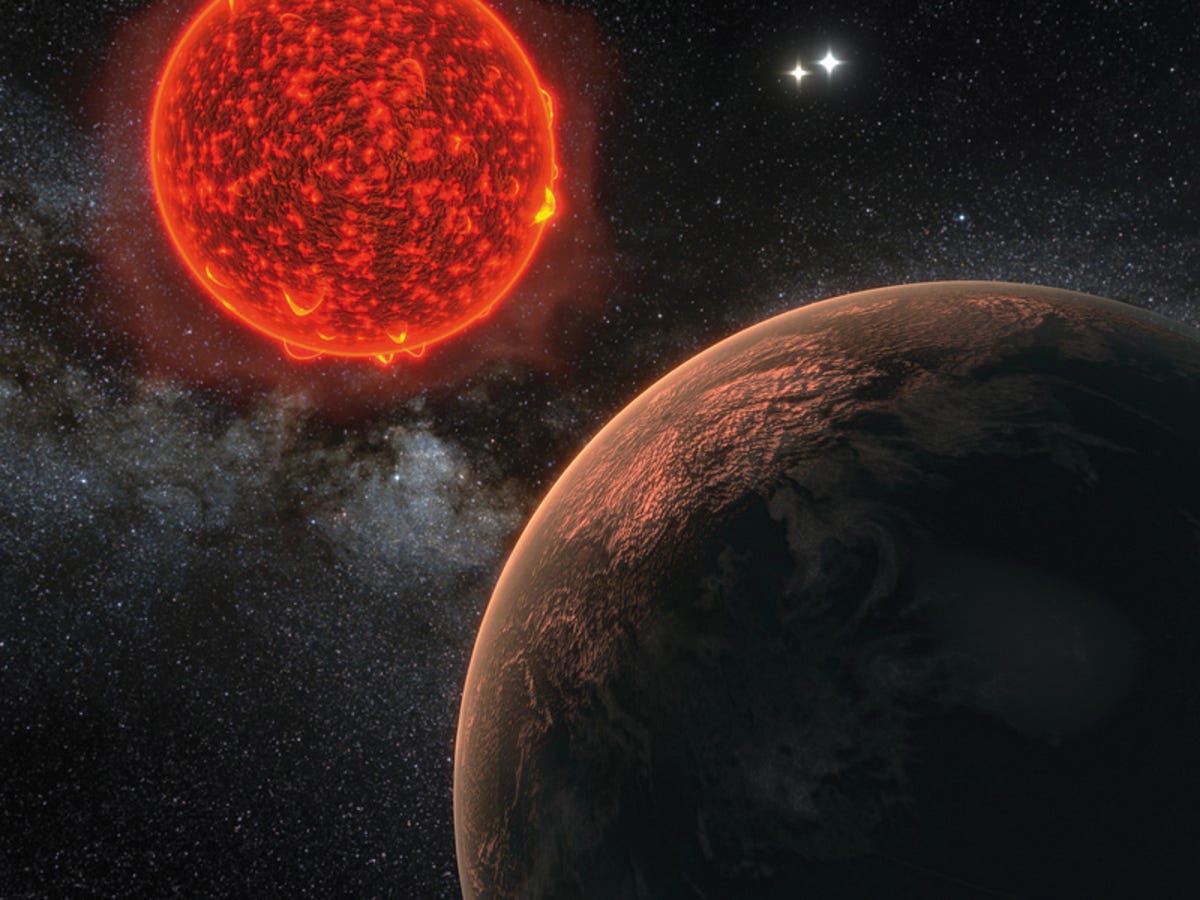Proxima b, the closest Earth-like exoplanet, is real (pictures)
The newly discovered Proxima b orbits Proxima Centauri, the nearest star beyond our solar system. Proxima b might host water and even life.

Snug with its star
Astronomers have discovered an "Earth-like" planet orbiting Proxima Centauri, the nearest star to Earth besides our own sun. The planet, dubbed Proxima b, orbits nearly five times closer to the red dwarf than Mercury does to our sun. Because Proxima Centauri is much smaller and cooler than our sun, the rocky planet is still in the habitable zone where water and life could theoretically exist. Click through for more views and details on one of the most significant space discoveries since the first exoplanet around a sun-like star, 51 Pegasi b, was confirmed in 1995.
View from another Earth
This is an artist's rendition of the surface of Proxima b with Proxima Centauri on the horizon. The nearby star Alpha Centauri AB can also be seen to the upper right.
Searching the skies
The European Southern Observatory's 3.6-meter La Silla telescope can be seen in the top of this composite. It was one of the instruments used to confirm the presence of a habitable-zone planet around Proxima Centauri at the lower right -- shown next to an image of the double-star Alpha Centauri AB.
A shorter path
This slide illustrates how much closer the orbit of the planet around Proxima Centauri (Proxima b) is compared with the orbit of Mercury around our sun.
Water world?
Another rendering shows Proxima b facing Proxima Centauri. The planet is likely tidally locked to its star, which means the same side is always facing the star.
Not the brightest star in the sky
The bright star in this image of the night sky is Alpha Centauri AB. Proxima Centauri is the much fainter red dwarf star nearby.
The VLT in action
A shot of the European Southern Observatory's Very Large Telescope (VLT) during observations. The yellow line is a "laser guide star," part of an adaptive optics system that compensates for the blurring of Earth's atmosphere. The VLT was used for observations of Proxima Centauri over the years.
Rocky and warm
Proxima b is a little more massive than Earth, but it orbits very close to its star, with years that last less than two weeks.
What finding a new planet looks like
A chart of the Doppler shifts that indicated Proxima Centauri was "wobbling," indicating the presence of a nearly Earth-size planet in close orbit.
HARPS spectrograph
The HARPS spectrograph seen during laboratory tests. The ESO instrument was used to help confirm the existence of Proxima b. The vacuum tank is open so some of the high-precision components inside can be seen.
Map to our new neighbor
This chart shows the large southern constellation of Centaurus (The Centaur), providing a map for future generations to travel to the nearest exoplanet. Proxima Centauri is too faint to see in the night sky without using a small telescope.
Small star, big discovery
Proxima Centauri is comparatively small to many other stars and even planets.
The size of two suns in the sky
Proxima Centauri would appear much larger in the sky to someone on Proxima b than our sun does to us from Earth, despite being a smaller star. This is because of how close the planet orbits.
Proxima b spotters
The ESO's 3.6-meter telescope and the Swiss 1.2-meter Leonhard Euler Telescope in this image are planet-spotting heavyweights that helped identify Proxima b.

